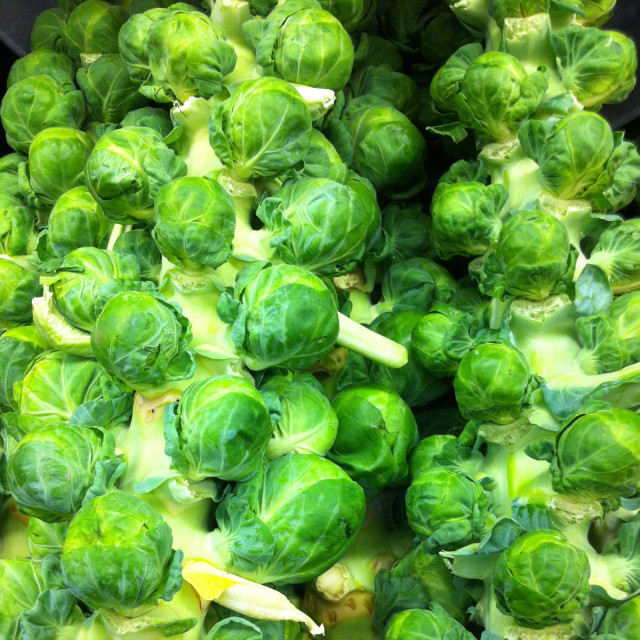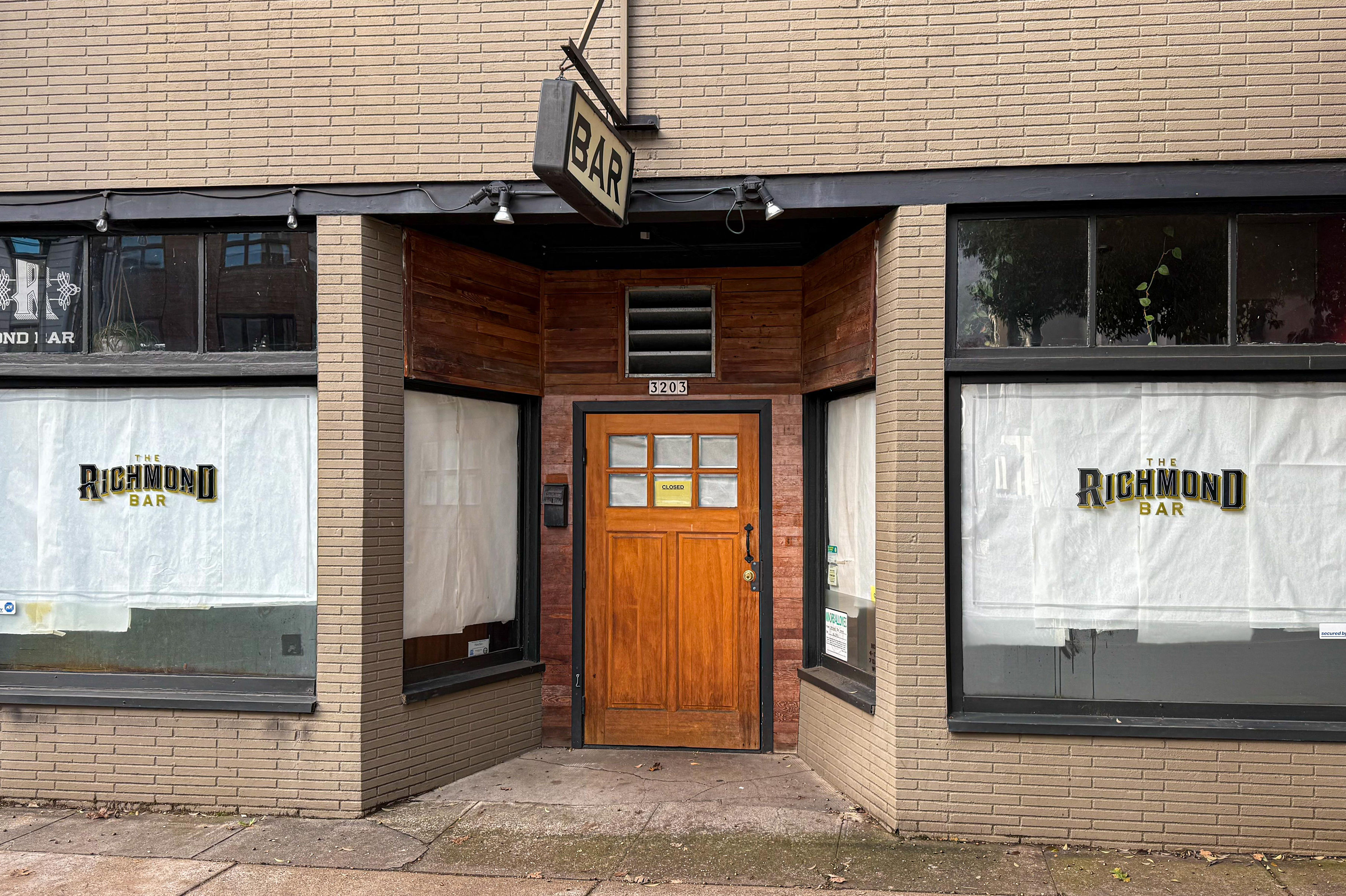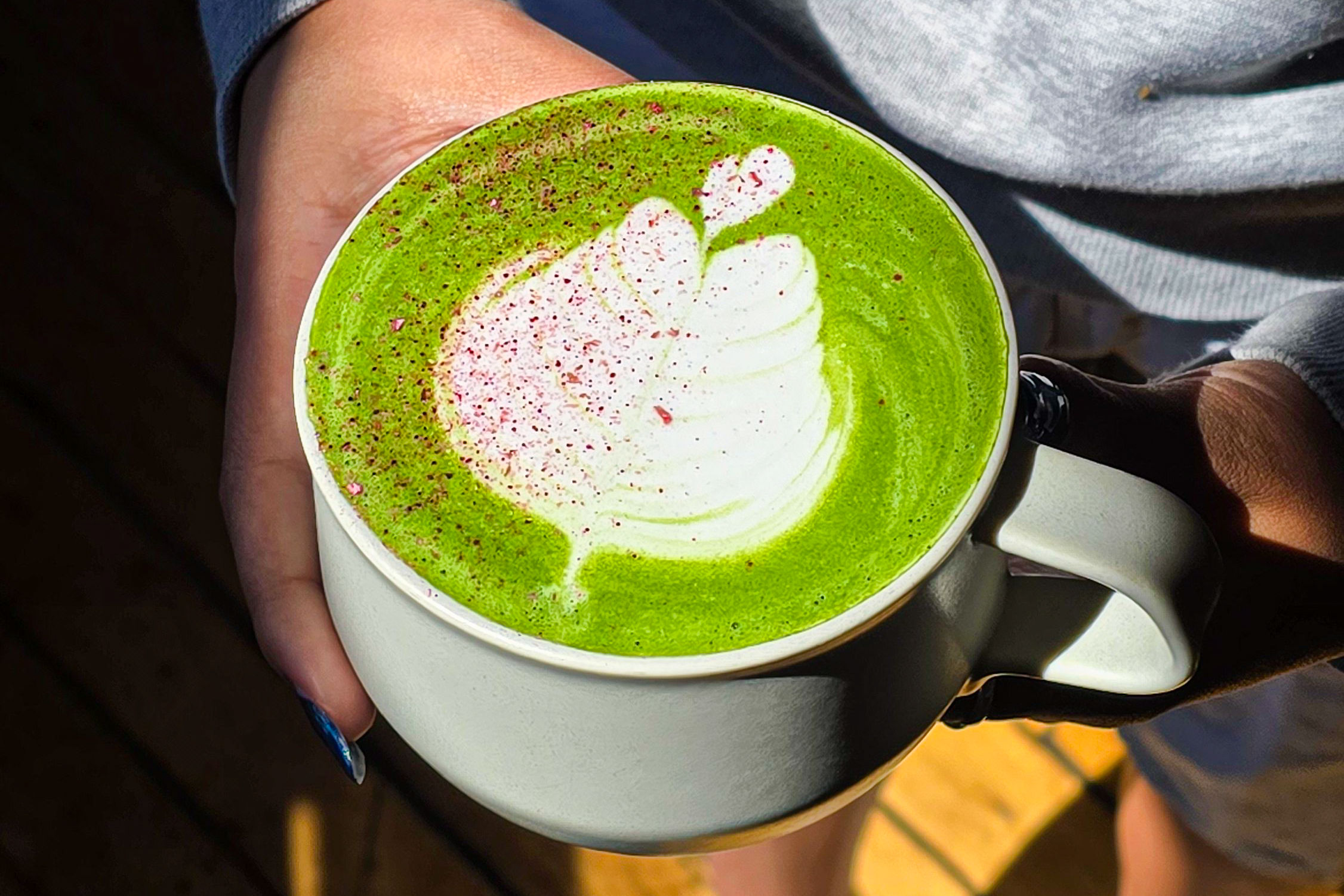Are These Sprouts Really From Brussels?

Somehow, even though they are tiny-sized cabbages that grow on little trees, Brussels sprouts have managed to stay off the mass market food radar. That should change.
Undoubtedly we are all aware of these proven scientific facts: 1.) people perceive small things as cute; and 2.) people like cute things. Thus it would follow, wouldn’t it, that people would like Brussels sprouts, those adorable little miniature cabbages? Cute as a button, for sure. Plus, they grow on stalks like little trees. How cute is that? Evidently not enough to make them a staple of American diets.
Surely that is changing, however. Locally grown produce in Portland this fall is helping elevate the stature of the little cabbage cousin, the sprout from the poor European stepchild city, not-Paris but Brussels, home of the EU and NATO. Brussels may get a bad rap, but the sprouts are great. Just don’t get them frozen in a cardboard box. Get ‘em fresh at your local co-op or grocery store, or at the winter farmers’ markets (which include Hillsdale, every other Sunday, or Portland Park Blocks Saturdays – at PSU through December 17, Shemanski Park January 7th through February 25th).
Dove Vivi, that great little cornmeal-pizza place on the Eastside, recently offered inspiration for the less than venerated green vegetable, with a delicious shaved Brussels Sprouts vinaigrette salad. The uncooked dish is unconventional, even for Brussels Sprouts lovers like myself, and I haven’t tried to replicate it (though I intend to). Instead, as fall descends and I anticipate winter, I smile in the knowledge that it’s finally the season when my go-to super simple dinner is roasted Brussels sprouts.
But how did they get that name? Turns out they hail originally from ancient Rome, but were first cultivated in larger quantities in the namesake Belgian city in the late 16th century. French settlers brought them to Louisiana in the 18th century, and Thomas Jefferson grew them at his sustainable farm, Monticello.
Who knows what Jefferson’s favorite recipe was for Brussels sprouts, but they are versatile and easy to prepare. Sprouts should be firm and tight-leafed. Just wash, trim the ends and pull off any yellowy leaves. (Some books call for slicing a tiny X in the base for even cooking, but I’ve never found that to make any difference at all and therefore not worth the time unless you’re into adding steps for ritualistic reasons!)
Slicing them in half or quarters if they are large, however, does matter. It reduces cooking time significantly and allows more surface area to get a bit browned and crispy, depending on the cooking method (and your taste).
Brussels sprouts can be steamed, boiled or sautéed – all are quick methods, taking about 5-15 minutes depending on whether the sprouts are cut. Roasting takes a bit longer – about 25-30 minutes at 450º F, but adds a nutty robust depth of flavor. First toss with the usual olive or another oil, salt and pepper, and lay them on a roasting sheet in a single layer. When they’re firm but can be pricked with a fork, they are done. If a few leaves fall off as you toss them about during cooking, all the better – they can crisp up and add contrast to the firm but soft heart of the little cabbages.
Whichever method of cooking you use, Brussels sprouts lend themselves to being tossed in with other strong flavors and contrasting textures; try pancetta, fresh chestnuts, toasted almonds or hazelnuts, or a light glaze of lemon/shallot/garlic goodness. Butter works as well!




